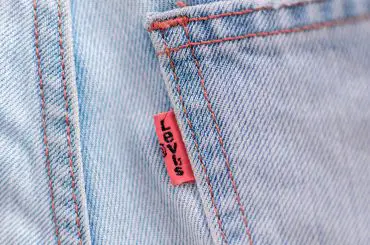Contents
Is H &M Sustainable – Introduction
H&M / Hennes & Mauritz AB is a Swedish multinational fast-fashion retailer founded in 1947. The company is known for its affordable clothing, accessories, and cosmetics for men, women, and children. H&M operates in over 70 countries with over 5,000 stores and an online presence. The company has a vast customer base and is one of the biggest fashion retailers in the world.
Importance of sustainability in the fashion industry
Sustainability is becoming more critical in the fashion industry due to its significant environmental and societal impact. The fashion industry is one of the leading environmental polluters in the world, with harmful practices such as excessive water consumption, chemical pollution, and greenhouse gas emissions. In addition, the industry is known for its labor exploitation and unethical supply chain practices. Consumers are becoming more aware of these issues and are demanding that fashion companies prioritize sustainability and ethical practices. As a result, many fashion brands are starting to adopt sustainable initiatives to reduce their environmental impact and promote social responsibility.
Thesis statement: Despite H&M’s efforts to become more sustainable, concerns remain regarding its overall environmental and societal impact.
Is H &M Sustainable?
H&M, the Swedish fast-fashion retailer, has implemented several sustainability initiatives to reduce its environmental impact and promote ethical and sustainable practices in the fashion industry. Here are some examples:
Sustainable Materials:
H&M has committed to using 100% sustainably sourced or recycled materials by 2030. They have also introduced a range of environmentally friendly materials, like organic cotton, recycled polyester, and Tencel.
Circular and Sustainable Fashion:
H&M launched its first “Close the Loop” Collection in 2013, made entirely from recycled materials. In 2020, they launched their first “Circular Fashion” collection, which focused on circularity and reducing waste.
Water Conservation:
H&M has implemented several initiatives to reduce water usage, such as using more sustainable dyeing and finishing techniques and implementing water recycling systems in their factories.
Responsible Chemical Management:
H&M has committed to eliminating hazardous chemicals from its supply chain by 2020. They have also introduced a chemical management system that aims to reduce the use of chemicals in production.
Fair and Ethical Labor Practices:
H & M has implemented several initiatives to improve labor conditions in their supply chain, such as implementing a living wage strategy and collaborating with labor rights organizations.
Transparency:
H&M publishes an annual Sustainability Report that provides information on their sustainability initiatives and progress and their environmental and social impact.
While H & M has made significant strides in its sustainability efforts, some critics argue that their fast-fashion business model is inherently unsustainable. Nonetheless, H & M’s sustainability initiatives have positively impacted the fashion industry and serve as a model for other companies to follow.
Further discussion of H & M’s use of sustainable materials and production methods
H&M has made a significant effort to incorporate sustainable materials and production methods into its business model. Some sustainable materials that H&M uses include organic cotton, recycled polyester, and TENCEL™ lyocell.
Organic cotton is grown without harmful chemicals, reducing the environmental impact of cotton production. H&M has been a significant proponent of organic cotton and has used it in various products, including clothing, home textiles, and accessories.
Recycled polyester is made from recycled plastic and other waste materials, reducing the need for new petroleum-based materials. H&M has been using recycled polyester in its products for several years, and in 2020, the company announced that it had sourced 57% of its polyester from recycled materials.
TENCEL™ lyocell is a sustainable material made from renewable wood sources. It requires less water and energy to produce than other materials and has a lower environmental impact. H&M has been using TENCEL™ lyocell in its products for several years and has expanded its use recently.
In addition to using sustainable materials, H&M has also implemented sustainable production methods. For example, the company has implemented water-saving technologies in its production processes, reducing the amount of water used to produce its products. H&M has also implemented energy-efficient lighting and heating systems in its stores and warehouses, reducing energy consumption and greenhouse gas emissions.
Overall, H&M’s use of sustainable materials and production methods is a positive step towards creating a more sustainable fashion industry. However, it is essential to note that much work must be done to address the environmental and social impact of the fashion industry as a whole.
H&M has implemented various social and labor initiatives to improve working conditions and promote ethical practices throughout its supply chain. Some of these initiatives include:
Fair living wages:
H&M has committed to ensuring that all workers in its supply chain receive a fair living wage, which covers the basic needs of workers and their families. The company has also supported industry-wide initiatives such as the Fair Wage Network promoting living wages.
Worker empowerment:
H&M has implemented programs to empower workers and guarantee they have a voice in decision-making processes. For example, the company has established worker committees and conducted training programs to build workers’ capacity.
Supplier assessments:
H&M regularly assesses suppliers to ensure they meet the company’s ethical and sustainability standards. The assessments cover a range of issues, including working conditions, environmental practices, and human rights.
Transparency:
H&M has committed to being transparent about its supply chain and has published information about its suppliers and their performance on various sustainability and social issues.
Collaboration:
H&M has worked with various stakeholders, including NGOs, trade unions, and governments, to promote ethical practices throughout the fashion industry. The company has also participated in several industry-wide initiatives to improve labor and social conditions.
While H& M’s social and labor initiatives are a positive step, the company has faced criticism from some stakeholders over its labor practices. Some critics have argued that the company’s fast business model pressures suppliers to produce garments quickly and cheaply, leading to poor working conditions and low wages.
Additionally, there have been allegations of labor rights abuses in some of the company’s supplier factories. H& M has acknowledged these issues and has committed to addressing them through various initiatives, including supplier assessments and worker empowerment programs.
Objections of H&M’s sustainability efforts
H& M, like many fashion brands, H& M has faced criticism for its sustainability efforts. Some of the steps that have been levied against H&M include the following:
Greenwashing:
H& M has been accused of greenwashing or making exaggerated or misleading claims about its sustainability efforts. For example, the brand has been criticized for promoting its Conscious Collection, which uses more sustainable materials, while continuing to produce large volumes of fast fashion.
Lack of transparency:
Some have argued that H& M lacks transparency regarding its sustainability efforts. The brand has been criticized for not providing enough information about its supply chain and not disclosing its carbon footprint.
Labor practices:
While H& M has tried to improve factory working conditions, some critics argue that the brand needs to do more to overcome labor issues in its supply chain. In 2019, H&M was criticized for its relationship with a supplier in Cambodia that was accused of using forced labor.
Overproduction:
H& M has been criticized for contributing to overproduction and waste in the fashion industry. Critics argue that the brand’s fast fashion model encourages consumers to buy more clothes than they need, leading to environmental damage and waste.
Chemical use:
H & M has been criticized for using chemicals in its production process. The brand has been accused of using hazardous chemicals that can harm the environment and good health.
It is worth noting that H & M has taken steps to address these criticisms, such as launching a transparency initiative, committing to using more sustainable materials and improving labor practices in its supply chain. However, the brand continues to face criticism from some sustainability advocates.
H& M has significantly improved its sustainability practices in past years, but there is still room for improvement. The brand has implemented several sustainability initiatives, including using more sustainable materials, reducing its carbon footprint, and improving factory working conditions. H&M has also launched several programs to reduce waste and promote circularity, such as its Garment Collecting program and its partnership with the Ellen MacArthur Foundation.
However, H& M has faced many for its fast fashion model, which encourages consumers to buy more clothes than they need, leading to environmental damage and waste. Additionally, the brand has been accused of greenwashing and lacking transparency in its sustainability reporting.
While H & M has made progress toward becoming a more sustainable brand, there is still work to address these criticisms and improve its sustainability practices.





